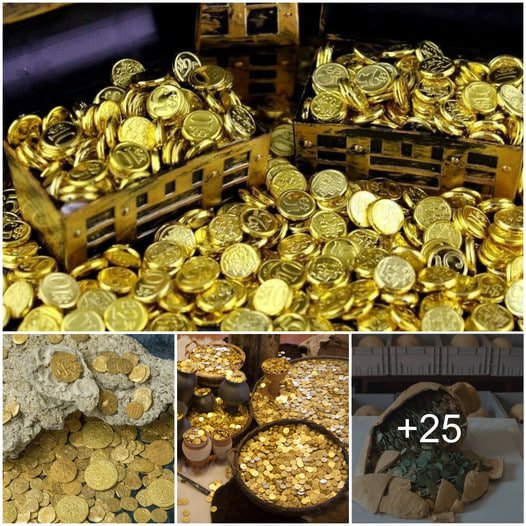The impressive Alaska Centennial Gold Nugget, weighing a hefty 21lbs and composed of over 90% gold, has hit the market in Dallas for a cool $1million after being unearthed by prospector Barry Clay in 1998. This remarkable nugget, roughly the size of a child’s head, is now up for grabs at Hermitage Auctions, alongside a variety of other valuable items.
Clay stumbled upon this treasure while operating his bulldozer along the banks of Swift Creek Mine in Alaska, a century after the famous Klondike Gold Rush of 1896. Recognizing the significance of his find, he temporarily buried the nugget beneath an Alaskan tree before seeking professional input. Experts confirmed that this nugget is the second largest ever discovered in the Western Hemisphere, trailing behind only the 24lb ‘Boot of Cortez’ nugget unearthed in Mexico in 1989.
Having acquired the nugget from Clay over two decades ago, the current owner has decided to part ways with this exceptional piece, now available for purchase through Heritage Auctions. The Alaska Centennial Gold Nugget has been officially recognized as the largest gold nugget found in Alaska and presents a unique opportunity for collectors and enthusiasts to own a remarkable piece of mining history.

The Alaska Centennial Gold Nugget will be showcased as the star attraction in a dazzling collection of gold, gems, and fine minerals up for auction in Dallas, Texas through Hermitage Auctions this December. Anticipation is high, as some of the items are expected to fetch prices in the hundreds of thousands of dollars on December 8th.
These gold nuggets have broken away from their original rock, taking a journey through streams or rivers before settling into sediment. With less than 50 nuggets weighing over 15lbs in existence, most mined gold is refined, making the Alaska Centennial Nugget an extraordinary find of a very scarce commodity.
A representative from Heritage commented, “The Alaska Centennial Gold Nugget holds the title of the largest ever discovered in the State of Alaska. Unearthed in 1998 along Swift Creek near Ruby, Alaska by Barry Clay, this nugget has etched its place in history as a monumental find.”

The famous Alaska Centennial Nugget, previously owned by a private collector, is now up for auction at the Heritage Auction in Dallas, presenting a unique opportunity for collectors. Along with this renowned nugget, the auction features a diverse range of precious crystals, artifacts, and even ‘gold geysers’. Among the standout items are two native gold crystals from Venezuela, expected to fetch up to $600,000, and an intricate ‘frozen geyser of gold’ from California valued at nearly $200,000. Additionally, a crystallized gold leaf believed to be from Mexico is also featured with a value of $150,000.
Established in 1976 in Dallas by rare coin collectors, the Heritage Auction house is a prominent auction house in the United States, known for selling a wide array of artifacts, precious metals, as well as rare comic books and sports memorabilia. During a recent YouTube showcase by Craig Kissick, the Director of Nature and Science at Heritage Auctions, and Joe Maddalena, the Executive Vice President, the Alaska Centennial Nugget was highlighted as a significant piece that could potentially belong in the Smithsonian Institution due to its historical value. The auction is set to take place on December 8.

A stunning discovery of a frozen gold geyser at the Eagle’s Nest mine in California has been estimated to be worth nearly $200,000. The breathtaking image was captured by Hermitage Auctions.

Also up for grabs are two stunning native gold crystals found in the Venezuelan rainforest back in the 1980s. Experts predict that one could go for as much as $300,000, while the other could fetch a whopping $600,000.

This unique piece of crystallized gold leaf, believed to be of Mexican origin, is appraised at $150,000 and will be up for auction on December 8 in Dallas, Texas courtesy of Hermitage Auctions.
Kissick pointed out, “The majority of gold extracted is processed and refined. A one-ounce gold nugget is rarer than a five-carat diamond, and a collection of unique gold specimens like this one has never before been seen at auction. It’s not just impressive, it’s also significant as the largest piece ever discovered in the state of Alaska. What more can be said about its beauty and rarity?”

